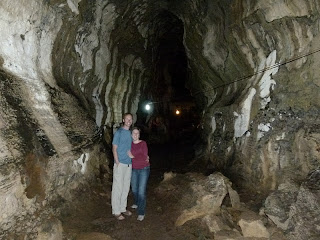In Galapagos, we were at sea-level and the air was thick and humid. We travelled from Galapagos to Cusco where the altitude is 3,400 metres (over 11,000 feet) and the air is very thin and dry.
The change in altitude was a big shock for our hearts and lungs. We live at an altitude of just 700 metres (2,500 feet). Most of our trip so far has been at low altitude (mostly sea-level).
A short walk in Cusco is enough to get your heart pumping. You never fully adjust to the altitude but you adjust enough to enjoy the amazing sites in and around Cusco.
Coca tea helps with symptoms of altitude sickness. The tea has many stimulants including trace amounts of cocaine. Hotels and restaurants serve it so it must be safe right?
Cusco was the capital of the Inca Empire that dominated most of western South America in the 15th century. The Inca people and almost all parts of their civilization were destroyed by the Spanish when they conquered South America in the early 16th century. A few Inca sites remain intact and it's easy to see that the Inca people were exceptional architects and engineers.
We visited several Inca sites in Cusco with the first being Coricancha. It was a temple to the Sun god - the most important god for the Incas. Only parts of it remain intact. The Spanish destroyed most of it and built a convent on top of the temple's foundations. This was done as part of their conquest of the Incas and their effort to convert the Inca people to Christianity.
Next up was Saqsayhuaman (pronounced kinda like "saxy waman"). This religious site has long zig-zagging stone walls built with the largest stones we'd seen since Stonehenge in England.
Here are a few more photos from Cusco.
The Inca sites in Cusco were great but there were even better sites waiting for us in the surrounding area. Stay tuned!
Vanessa and Blake
The change in altitude was a big shock for our hearts and lungs. We live at an altitude of just 700 metres (2,500 feet). Most of our trip so far has been at low altitude (mostly sea-level).
A short walk in Cusco is enough to get your heart pumping. You never fully adjust to the altitude but you adjust enough to enjoy the amazing sites in and around Cusco.
Coca tea helps with symptoms of altitude sickness. The tea has many stimulants including trace amounts of cocaine. Hotels and restaurants serve it so it must be safe right?
 |
| Bottoms up! |
Cusco was the capital of the Inca Empire that dominated most of western South America in the 15th century. The Inca people and almost all parts of their civilization were destroyed by the Spanish when they conquered South America in the early 16th century. A few Inca sites remain intact and it's easy to see that the Inca people were exceptional architects and engineers.
We visited several Inca sites in Cusco with the first being Coricancha. It was a temple to the Sun god - the most important god for the Incas. Only parts of it remain intact. The Spanish destroyed most of it and built a convent on top of the temple's foundations. This was done as part of their conquest of the Incas and their effort to convert the Inca people to Christianity.
 |
| Part of the temple - polished stone blocks fit tightly together without mortar |
 |
| Stone blocks used in the walls had grooves and notches to lock them together (kinda like Lego) |
 |
| Inside the temple |
 |
| Convent (tan coloured stone) built on temple's foundation (grey stone) |
Next up was Saqsayhuaman (pronounced kinda like "saxy waman"). This religious site has long zig-zagging stone walls built with the largest stones we'd seen since Stonehenge in England.
 |
| Just part of the walls |
 |
| Big stone behind us weights about 200 tonnes |
Here are a few more photos from Cusco.
 |
| Another Inca site - this one dedicated to the Water god |
 |
| Deceased Incas were prepared for their trip to the next world in this cave on the stone on the left |
 |
| Looking over Cusco - 350,000 locals and lots of tourists |
 |
| Cathedral of Santo Domingo |
 |
| Best hot chocolate in South America - thanks Amanda, Don and Fraser for telling us about it |
 |
| Vanessa's new alpaca wool sweater |
 |
| Traditional dance show at our hotel |
 |
| Blake trying to dance |
The Inca sites in Cusco were great but there were even better sites waiting for us in the surrounding area. Stay tuned!
Vanessa and Blake














































